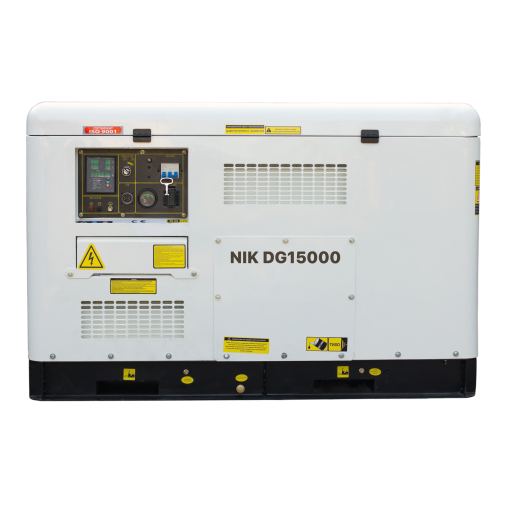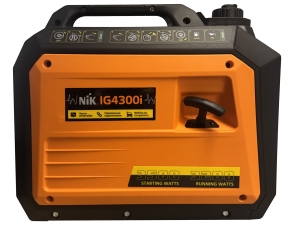How to Connect a Generator to a House
Here's a practical guide for anyone who has just purchased a generator or is planning to do so soon.
A generator is not just about comfort. In many cases, it's also about safety, ensuring your boiler pump, security system, or refrigerator keeps working during power outages.
This guide explains how to connect a generator to your home, what wiring options exist, and how to use it properly to avoid damaging equipment while providing reliable backup power during emergencies.
What You Should Know Before Connecting a Generator
Connecting a generator to your home is a serious yet manageable task. You can power your entire electrical system — if the generator has enough capacity, a voltage stabilizer, and an automatic transfer switch (ATS). However, most users connect only essential circuits for safety, cost-efficiency, and simplicity.
To connect your generator, you'll need:
- a generator with adequate power output;
- an extension cord or cable with the proper cross-sectional area;
- a transfer switch (grid/generator) or a method to fully disconnect your home from the grid;
- grounding (a metal rod and copper wire);
- fuel;
- engine oil.
It's important to plan for additional safety measures. Even inverter generators can cause voltage spikes. If your home has electronics with control boards (gas boilers, refrigerators, smart home systems), installing a voltage stabilizer or an uninterruptible power supply (UPS) is recommended.
Before starting the generator, identify which appliances you want to power. Start with the essentials: lighting, refrigerator, modem, and chargers. Don't overload the generator.
Choose a proper installation location — never indoors. Place it outside, under a canopy, or in a well-ventilated space. Before starting it up, check the oil level, ensure there's fuel, and confirm the grounding is secure.
The installation location depends on the type of generator. Unlike gas or diesel models, gas-powered generators can be installed on a rooftop or in a basement.
Another important aspect is choosing the correct cable. It must have the right cross-sectional area — thick enough to carry the electrical load safely. Undersized cables can overheat and potentially catch fire. For generators up to 3 kW, a copper cable with 2.5 mm² cross-section is typically used. More powerful models may require 4 or even 6 mm². The longer the cable, the thicker it must be to avoid voltage loss.
Once everything is ready, let's move on.
There are two main ways to connect a generator: do it yourself or hire a professional to handle everything. Let's explore both.
Important: Self-installation is only recommended if you have at least basic experience with electrical systems. Otherwise, it's best to call an electrician.
How to Connect a Generator by Yourself
Start by preparing the generator: check the oil level, add fuel (gasoline, diesel, or connect a gas cylinder depending on the model), and make sure the air filter is clean.
The air filter is usually located on the side or top of the generator under a cover secured by latches or screws. To check its condition, open the cover, carefully remove the filter, and inspect it. If it looks clean or slightly dusty, shake it out or blow it with compressed air. If it's heavily soiled — with oil stains or dust buildup — clean or replace it.
Foam filters can be washed with warm, soapy water, dried completely, and lightly oiled with motor oil. Paper filters can't be washed and should be replaced. After cleaning or replacing, reinstall the filter and secure the cover. Perform this check before every use or at least once a month.
Next, ground the generator. Drive a metal rod 1.5–2 meters into the ground, connect it with a copper wire, and attach it to the generator's grounding terminal.
The generator connection scheme depends on the generator type (portable, inverter, diesel, gas), switching method (manual or automatic), and how many appliances need to be powered.
The connection scheme defines how the generator is integrated into your home's electrical system — how power flows from it to your devices, how switching happens between grid and backup, and what safety devices are used.
A manual setup is simpler and more affordable. It's suitable for small generators and households, but requires you to manually flip switches. An automatic setup with ATS is more convenient: the generator starts automatically during an outage and switches back on when the power returns.
The ideal setup looks like this:
generator → circuit breaker → transfer switch or ATS → home distribution board.
Before starting the generator, disconnect your home from the grid by switching off the main breaker. This is critical to avoid back feeding electricity.
Then, turn on the generator, set the switch to "ON," and start the engine (via pull cord or button). Wait a few minutes for the engine to stabilize.
Connect appliances using an extension cord or a dedicated outlet. Start with low-power devices first — lights, then the refrigerator, and so on.
Once you're done using it, disconnect the load, shut off the engine, allow the generator to cool down, and then store or cover it.
We recommend running the generator for 5–10 minutes once a month, even if you're not using it regularly. Also, check the oil and avoid using old fuel, as it degrades over time.
Ordering a Professional Generator Installation
If you have no experience with electrical system design, it's best to hire a certified electrician. A pro will select the right connection scheme based on your generator's power rating, your home's setup, the type of appliances you plan to run, and safety standards.
Why hire a professional?
- You're guaranteed proper functionality.
- Full safety assurance;
- Fast and reliable setup;
- You'll receive detailed instructions on operation — what to press, when, and how.
Additionally, some manufacturers (like Generac) require installations to be carried out by authorized service providers to maintain the warranty.
NIK specialists provide generator installation and connection services: consultations, switch setup, ATS installation, technical support, and full-service maintenance are all available on request.
Need help choosing or connecting a generator? Contact NIK for expert support tailored to your needs.
5 Best Generators for Your Home — Selected by NIK Expert
How to Choose a Generator for Your Home, Business, or Industrial Use
Related Products
Other Articles and news
- Find out about the latest news and useful information from the world of generators and energy solutions. We will help you stay up to date with modern technologies and choose reliable equipment.
Contact us
- Do you have any questions or suggestions? Fill out the form - our manager will contact you shortly




